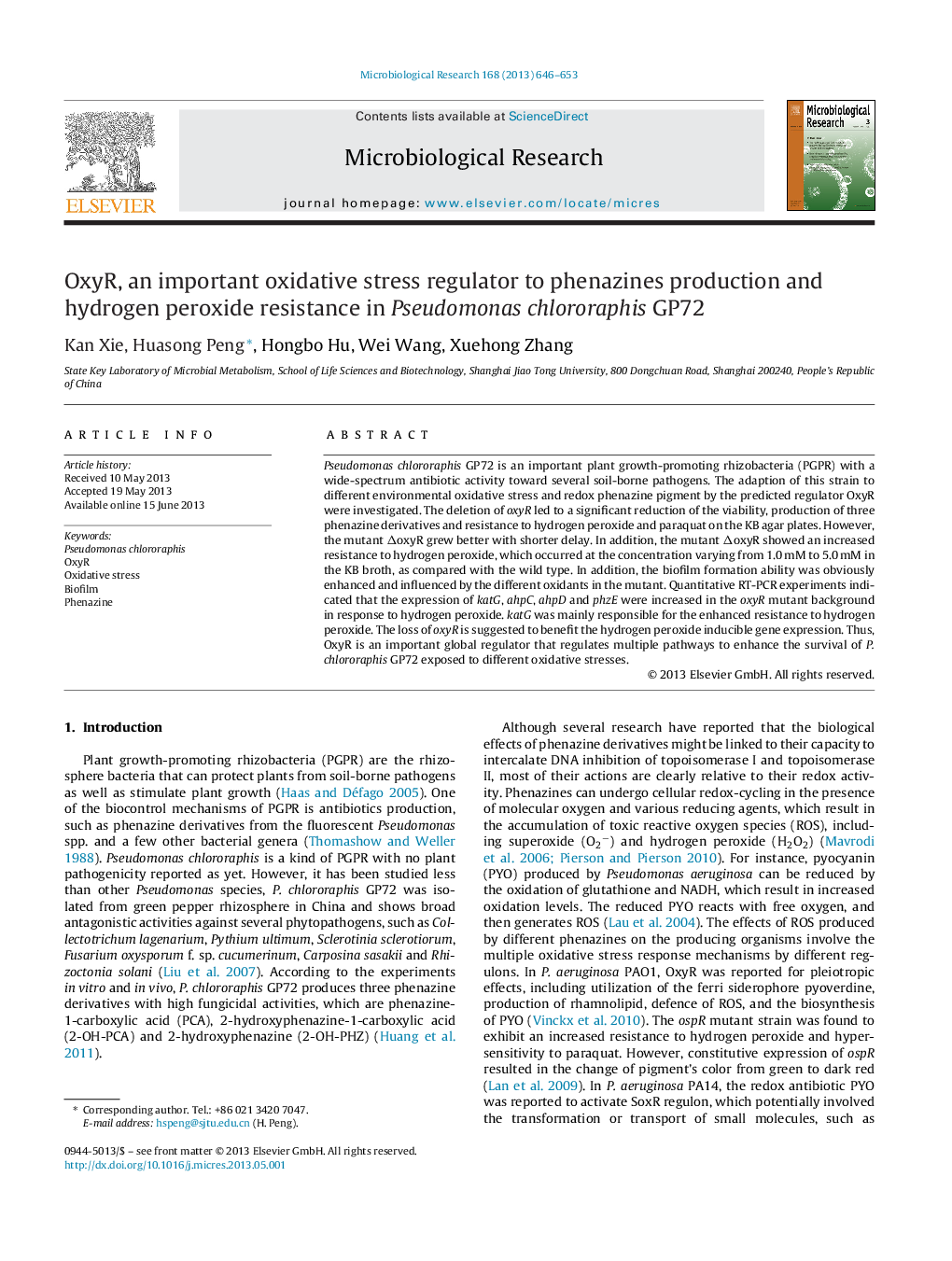| Article ID | Journal | Published Year | Pages | File Type |
|---|---|---|---|---|
| 2092349 | Microbiological Research | 2013 | 8 Pages |
Pseudomonas chlororaphis GP72 is an important plant growth-promoting rhizobacteria (PGPR) with a wide-spectrum antibiotic activity toward several soil-borne pathogens. The adaption of this strain to different environmental oxidative stress and redox phenazine pigment by the predicted regulator OxyR were investigated. The deletion of oxyR led to a significant reduction of the viability, production of three phenazine derivatives and resistance to hydrogen peroxide and paraquat on the KB agar plates. However, the mutant ΔoxyR grew better with shorter delay. In addition, the mutant ΔoxyR showed an increased resistance to hydrogen peroxide, which occurred at the concentration varying from 1.0 mM to 5.0 mM in the KB broth, as compared with the wild type. In addition, the biofilm formation ability was obviously enhanced and influenced by the different oxidants in the mutant. Quantitative RT-PCR experiments indicated that the expression of katG, ahpC, ahpD and phzE were increased in the oxyR mutant background in response to hydrogen peroxide. katG was mainly responsible for the enhanced resistance to hydrogen peroxide. The loss of oxyR is suggested to benefit the hydrogen peroxide inducible gene expression. Thus, OxyR is an important global regulator that regulates multiple pathways to enhance the survival of P. chlororaphis GP72 exposed to different oxidative stresses.
